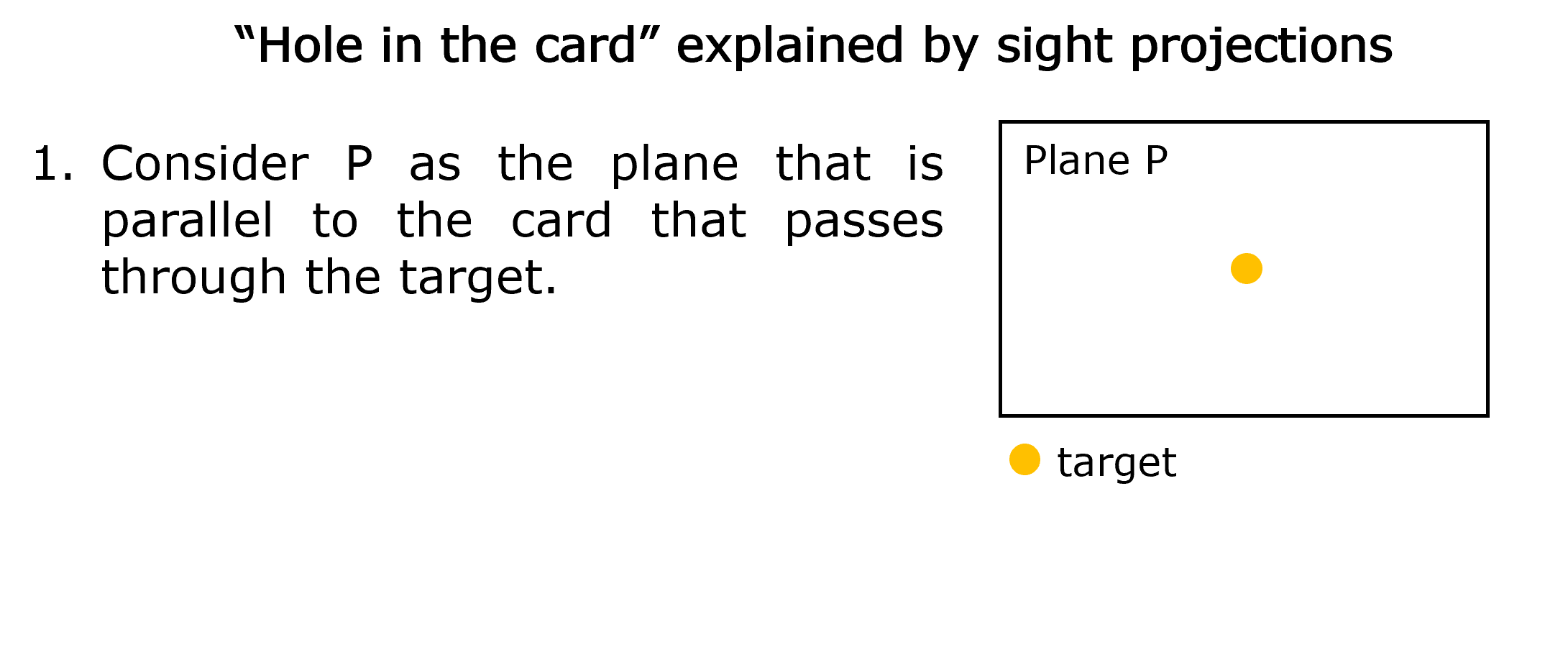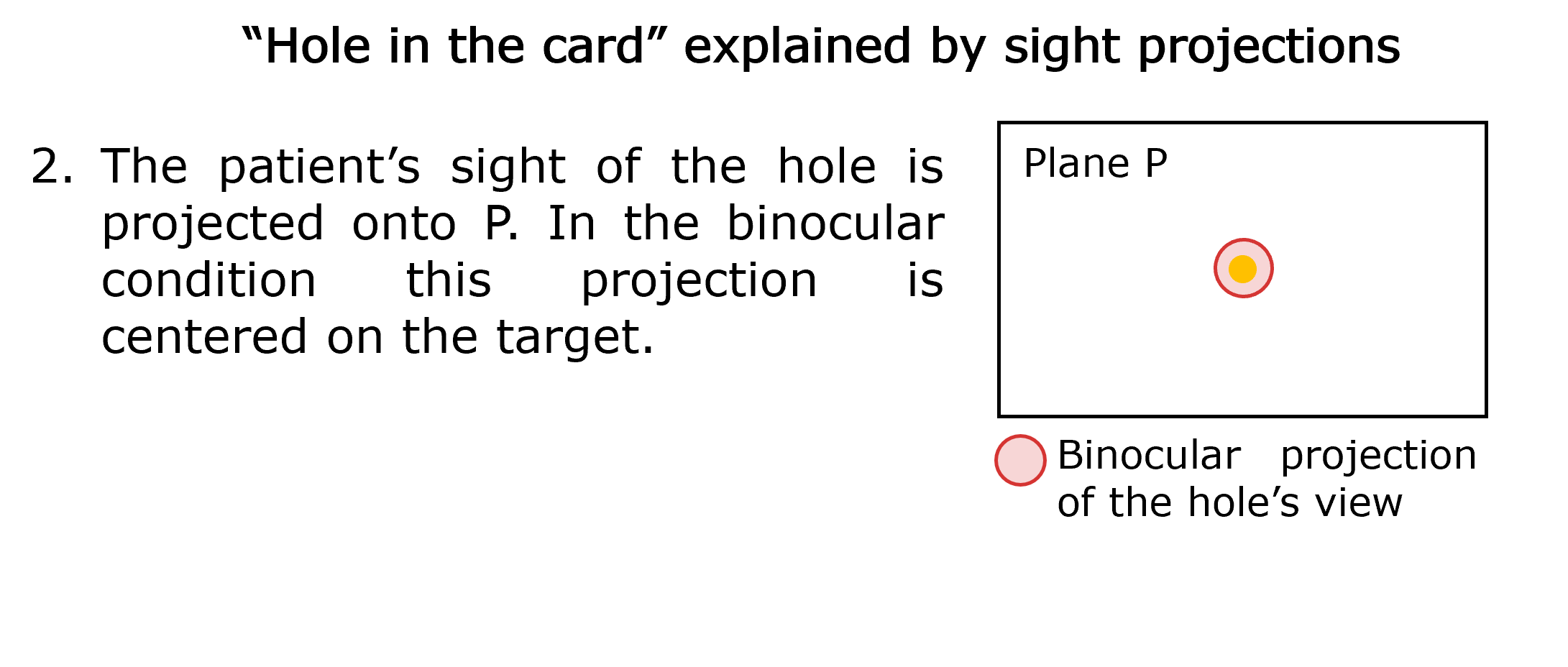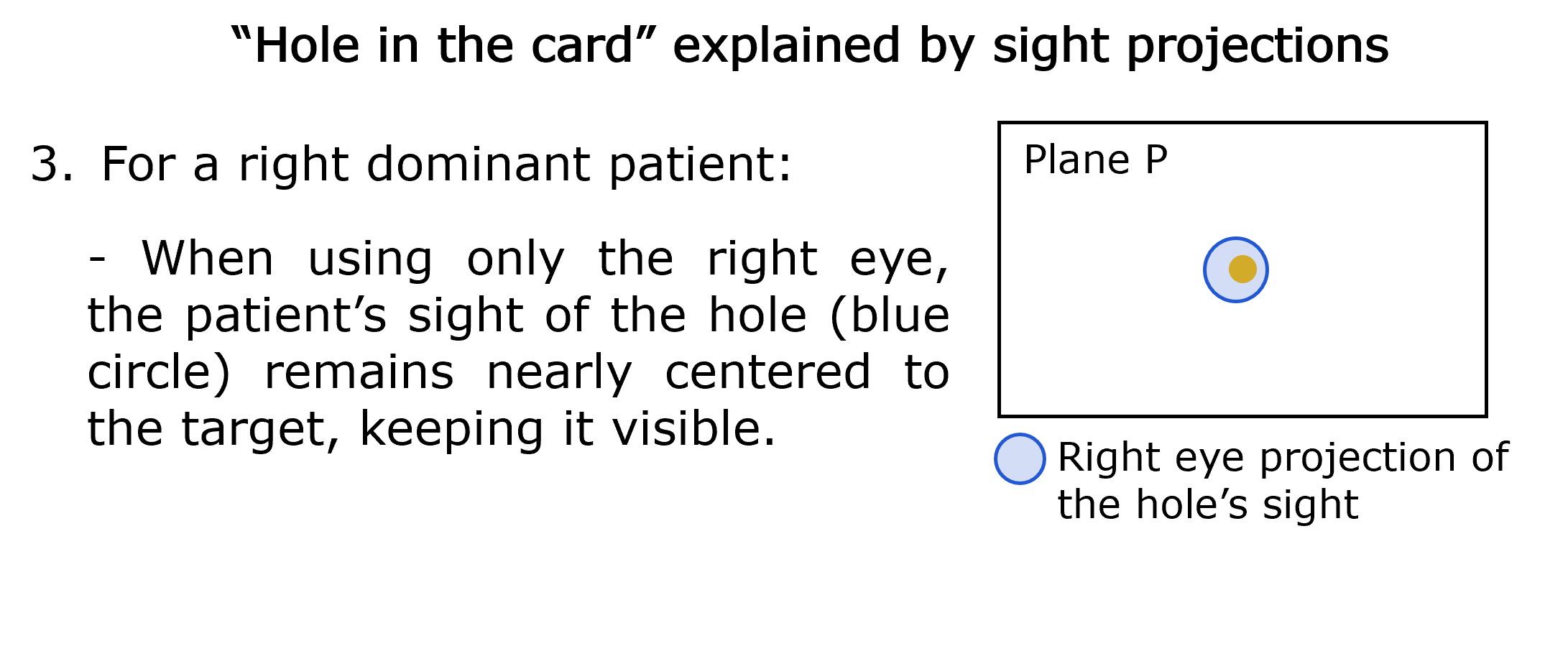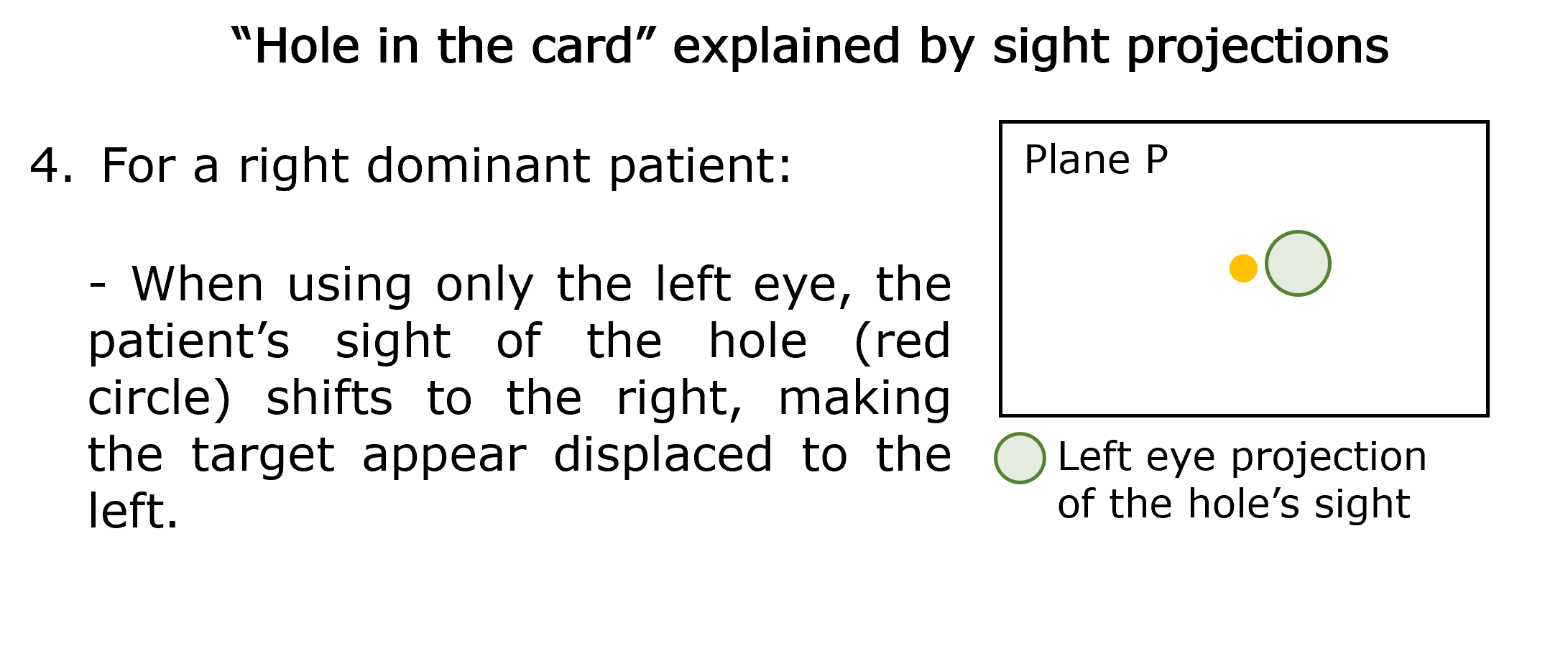The 3 classic methods for indicating what is the dominant eye
Sighting eye dominance is associated to an increased guidance of one eye in tasks involving a line of sight and visuo-motor coordination, like aiming at a target with a gun. Indeed, to determine the dominant eye patients perform
alignment tasks: patient’s sight must be aligned with a target and a third object (usually a finger or a hole). The three most popular methods to assess what is the dominant eye are the Miles method, the Point test and, above all, the Dolman method (hole in the card).
These early methods, while widely used, have a limitation: These tests treat eye dominance as a fixed, binary trait rather than a spectrum.
Miles method
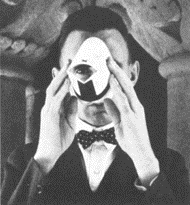
- The patient looks at a target card with two eyes, through a funnel-shape apparatus called Parson’s manuscope
- The cone base fits about the forehead, avoiding light comes in.
- When the target is moved far enough (2- 3 meters) the apparatus forces sighting through a single eye, while the subject has still the impression of using both eyes (if he had to choose what eye to use, the test would measure eye preference).
- For the examiner is easy to determine what eye he is using, that is the dominant eye.

- In the original Parson’s implementation, three target letters were shown. The subject oriented the monoscope to view the central target with the dominant eye, while only one of the remaining letters was visible to the other eye.The letters that were seen revealed which eye was dominant
Point test
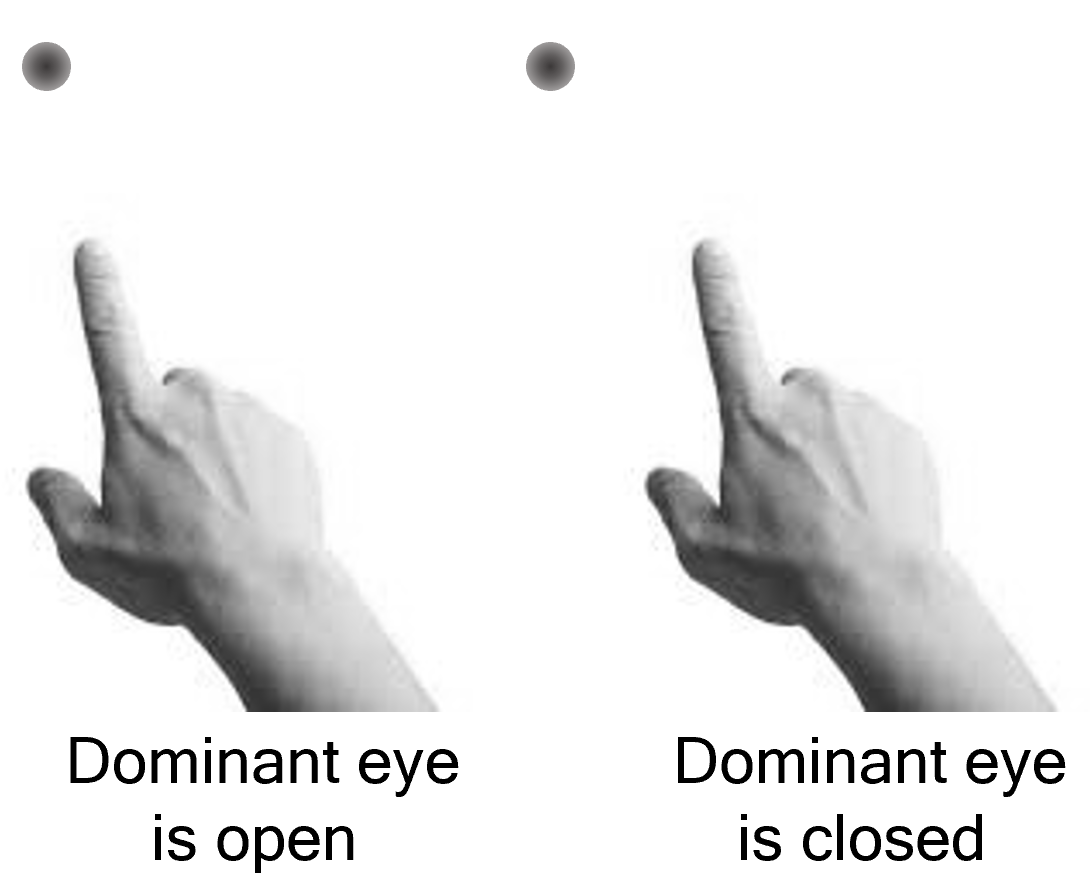
- The patient points toward a target with one finger (or with both fingers hold together) keeping both eyes open.
- The examiner alternatively occludes one eye of the patient.
- Only when the dominant eye is occluded the patient perceives a shift of the finger. Upon request, the patient will move the finger to re-align it with the target. This re-alignment movement will tell to the examiner what is the dominant eye.
- A quantitative version of the Point Test is known a Guillome’s method.
Hole in the card (or Dolman method)
- The patient elongates his arms holding a black card with a 2 cm hole in its center. Alternatively, he can use the hole generated by superimposing the hands.
- The patient aligns his binocular sight with the hole and the target (a pencil or a light spot).
- The examiner alternatively occludes one eye: the eye that monocularly still completely sees the target through the hole is the dominant one.

- The target apparently shifts toward the side opposite to the dominant eye.
- The target obviously is still, so why do we perceive its shift? It is because our monocular sights of the hole are different! Slide below to understand better this principle

